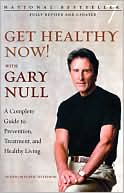"Judith Stock" - Reconnecting Children and Nature
 August 3, 2011
August 3, 2011 It may not be recognized by the AMA, but nature deficit disorder is raising Cain with children in the industrialized world — and it can be fought.
k
Miller-McCune.com
Traditionally, nature has served as humanity’s greatest teacher, the place where artists, poets and scientists go for inspiration. The natural world has the ability to draw us in and allow us to experience a sense of wonder.
But what happens when children fail to bond with nature?
Nature deficit disorder isn’t a medical term but a social phenomenon identified by Richard Louv, the author of Last Child in the Woods: Saving our Children from Nature Deficit Disorder.
Nature deficit disorder describes the high cost of separation between nature and children — including attention deficit hyperactivity disorder, childhood obesity, higher rates of physical and emotional illness and vitamin D deficiency, to list a few.
“There is very little that children do in their lives that compares with their first experience in nature,” Louv says.
Think back to your own childhood experience of being outside on a quest to discover your surroundings.
Today, instead of hiking, swimming and telling stories around campfires, children are more likely to attend computer or weight-loss camp, or play video games indoors. These activities relegate nature to a non-reality for children.
Louv cites an eye-opening 1991 study of three generations of 9-year-olds. It “found between 1970 and 1990, the radius around the home where children were allowed to roam on their own had shrunk to a ninth of what it had been in 1970.”
As Louv explains, as a child, he’d spent time in nature and felt that he’d gained something important. Then, in the late 1980s, while interviewing people for a book he was writing about the changing realities of family life, he recognized there was a profound change in the ways that people viewed nature, yet no one had a way to describe that condition.
Connecting the Dots
Here are some activities that encourage that connection with nature:
If you can’t come to one of the National Parks, join the WebRangers program, where kids can play interactive games, build a ranger station and other activities.
Enroll the family in nature clubs around the country that provide opportunities for families to get outside in the natural world.
Children and Nature Network resources and activities at
www.childrenandnature.org/research.
The National Wildlife Federation produces the GreenHour.org, an online resource providing parents with inspiration and the tools to make the outdoors a part of daily life.
Take a road trip to the Rachel Carson Homestead to foster a sense of wonder.
Step out your front door and track global climate change or the pigeons in your own neighborhood. Share your findings with real scientists. In so doing become part of a citizen science effort. Learn to do that and more in Eco-Tracking: On the trail of Habitat Change. This book by Daniel Shaw, in the UNM Press Barbara Guth Worlds of Wonder Science Series for Young Readers, tells the stories of how real young people are connecting with and caring for both their local environments and the world at large.
Over the next 12 to 15 years, researchers identified a growing gap between children and nature.
“Science now shows huge benefits to kids’ health when spending time outdoors,” Louv says. “The University of Illinois found that kids with ADD symptoms get better with just a little contact with nature. Research on childhood obesity suggests the more trees, grass and gardens in a neighborhood, the less obesity.”
As John McKinney suggested in a 2009 Miller-McCune article, the sworn enemy of nature deficit disorder might be “active living research” — which, while it specifically focuses on inactivity, inevitably means pushing people outdoors.
In Louv’s latest book, The Nature Principle: Human Restoration and the End Of Nature-Deficit Disorder, the author makes a convincing case that through a nature-balanced existence, the human race can thrive.
“We humans are essentially hunter-gatherer genotypes. Cognitive development is supposed to happen the way it does in hunting and gathering societies,” says David Sobel, a senior faculty member at Antioch University New England and author of Wild Play: Parenting Adventures in the Great Outdoors.
“What we want for our children is a sense of interdependency with the natural world, so their roots are organic instead of mechanistic, like computers and technology,” Sobel says. “Children are supposed to be outside as their language develops better. Kids develop a greater array of movement patterns while engaged in outdoor activities.”
Parents are so overwhelmingly educated about the dangers kids might face being out of eyesight, with the end result being that today’s children do without exploration time and free play. They are unwittingly assisted in the negative spiral by a built environment that doesn’t stress the human-nature connection, although so-called “biophilic design” can go a long way toward addressing that.
“Parents have to manage their own fears about what could happen to their kids outside,” Sobel says. “Don’t merely look at the risks of outdoor play, but look at the benefits, as they far outweigh the risks.”
It’s become a curiosity for kids to stay out all day or for parents to allow this behavior; the reasons are parental fears and lack of parental or family supervision. But beyond the front lawn, there are others who are willing to teach nature.
Take Dan Shaw, for example. He’s a middle-school science teacher at the private college-preparatory Bosque School and co-director of the Bosque Ecosystem Monitoring Program, in Albuquerque, N.M. The school began a program some 15 years ago to encourage kids to bond with nature by becoming young citizen scientists.
The Bosque School established a partnership with the University of New Mexico’s biology department to monitor the wetland habitat along the Rio Grande River in the student’s own neighborhoods. (Their technical reports are available on the school’s website.)
The data and quality control follow protocols established by the university’s biology department and used by government officials, both local and tribal, in New Mexico. “Our collected data is used to inform multimillion-dollar management decisions by corporations and the U.S. Army Corp of Engineers,” Shaw notes proudly. Consequently, 5,000 students and teachers became citizen scientists, monitoring their home watershed in this nationally honored, student-centered program.
Such education doesn’t have to be the province of the well off or the well placed, as shown in a nonprofit that operates at many Texas public schools in poorer and urban neighborhoods. The 8-year-old REAL School Garden program, which places a student-run garden on school grounds as a learning experience, has been useful for getting children outdoors and into nature, both physically and mentally.
Executive director Jeanne McCarty told Miller-McCune that the gardens create a virtuous circle when tied into school curricula: “Children are more engaged, more excited about learning, and I’d say the learning stays with them. Meanwhile, children learn about food, are inspired and [are] hopeful for the future.”
The program has also taught adults how far children are from their roots. “We have children who didn’t recognize a blackberry,” McCarty said, “and I think about my own childhood and how common blackberries were – we were always foraging. I’ve also heard funny stories about potatoes growing under the ground, which is something they didn’t know.”
The National Park Service offers the great outdoors, along with special programs for children. One such program is the Junior Ranger program at California’s Yosemite National Park.
Children and parents can go to the visitor center in the park and, for $3.50, buy a Junior Ranger Handbook, an activity guide for children ages 7 to 13. The handbook includes ways to enjoy, interpret and identify nature by giving kids tasks to accomplish. “Kids bring their handbook to a ranger, and after, they repeat an oath about valuing nature, they get a badge,” says Kari Cobb, park ranger at Yosemite.
“Being in nature provides a setting to encourage children’s minds to relax,” she says. “When I was a kid, I grew up hiking with my parents. Today, I am a park ranger.”
Cobb says you can start introducing kids to nature in small steps. “Anything that gets kids outside will enhance their appreciation of the natural world,” she explains. “My mom would say, ‘I’m going out to the garden. Why don’t you get your books and come outside with me and study on the porch?’”
Children are the stewards of the future. They need to connect with nature when they are young to develop a sense of accountability and stewardship for our planet.
It’s a simple solution. Get kids outside more often so they can discover the wonderment and adventure of the natural world.
 Email Article |
Email Article | 









